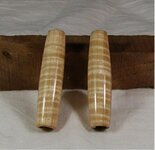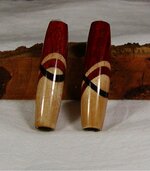gingerwood
Member
I just recieved the new stickfast polishing system last week and tried it out for the first time over the weekend, I must say that I was disappointed. I needed to micromesh through the last 4 grits and hit it with plastic polish to get an acceptable shine.
I have to wonder if the weather has anything to do with it. The video warned against generating too much heat, but I'm wondering if I wasn't generating enough. It seems like most of the people using/demoing the product were in the south, up there here temps this weekend where in the upper 50s to the mid 60s. I did get a better result when I sped up my lathe and applied more pressure.
On the plus side, my blanks wern't glued fast to my bushings when I was done. (I've got a dead center on order). Obviously this calls for more experimentation. I just hope the weather cooperates. The end of my turning season is in sight
I have to wonder if the weather has anything to do with it. The video warned against generating too much heat, but I'm wondering if I wasn't generating enough. It seems like most of the people using/demoing the product were in the south, up there here temps this weekend where in the upper 50s to the mid 60s. I did get a better result when I sped up my lathe and applied more pressure.
On the plus side, my blanks wern't glued fast to my bushings when I was done. (I've got a dead center on order). Obviously this calls for more experimentation. I just hope the weather cooperates. The end of my turning season is in sight


